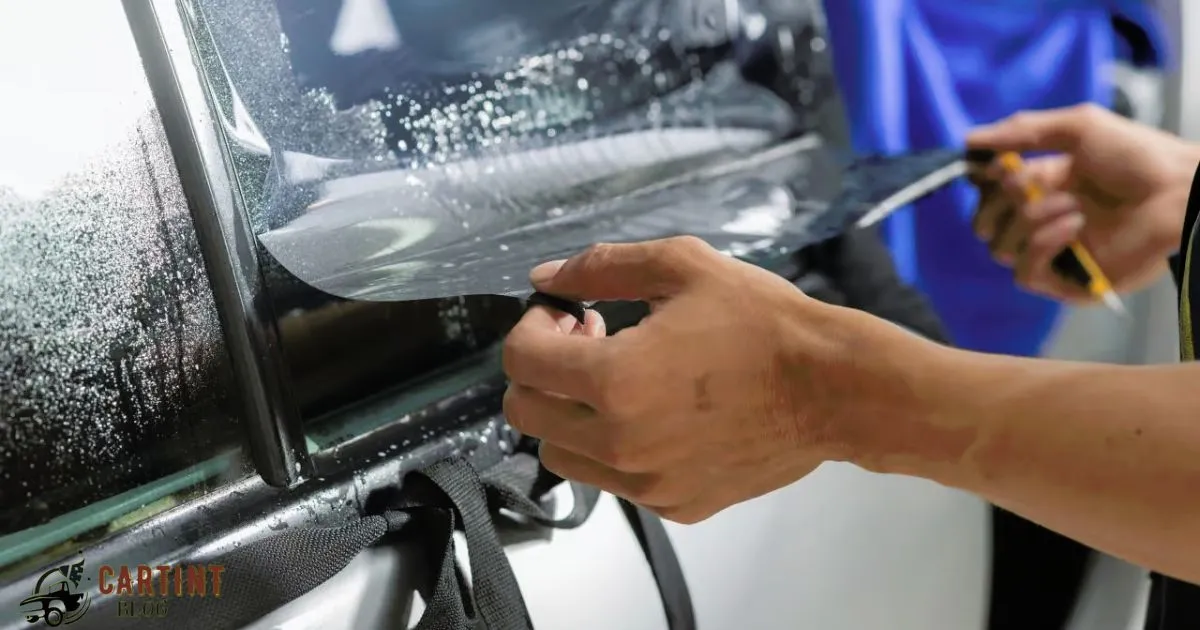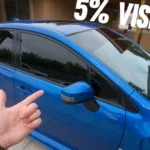DIY window tint refers to applying tint films on windows without professional help. It can save money upfront but might lack quality and expertise. The outcome depends on skills and materials used. Considering pros and cons helps determine if DIY tinting is worth it.
Are you wondering, Is DIY Window Tint Worth It? Dive into a world of cost-saving possibilities and self-made solutions! Discover the ins and outs of this window-transforming technique. Uncover whether the DIY route truly shines in tinting your windows for the long run.
Is DIY Window Tint Worth It is a common query among those considering home improvements. Exploring cost savings, application challenges, and end results helps determine if it’s a worthwhile endeavour. Stick around to discover key insights into this DIY project’s value.
Xtreme Auto Glass & Window Tint Blog
Xtreme Auto Glass & Window Tint Blog provides expert tips and insights on automotive window tinting and glass care. Our blog shares practical advice on maintaining your vehicle’s windows and making informed decisions about tinting options.
Whether you’re a car enthusiast or seeking to enhance your ride’s aesthetics, our concise articles offer valuable guidance for optimal window care and tinting solutions.Stay updated with Xtreme Auto Glass & Window Tint Blog for the latest trends and techniques in window tinting.
Our straightforward, informative posts cover everything from the benefits of tinted windows to the intricacies of choosing the right tint for your vehicle. Join our community to access easy-to-understand advice that empowers you to make informed choices for your car’s glass and tinting needs.
Not Understanding Local Tint Regulations
Understanding local tint regulations is crucial. These rules dictate how dark your window tint can be, varying by state and even city. Ignorance of these regulations can lead to fines or having to remove the tint, so it’s vital to research and comply before applying any tint to your windows.
Checking these regulations beforehand prevents potential legal issues and ensures your tint meets the required standards for your locality. When considering tint options, it’s advisable to choose the 20% tint for your car, ensuring both style and compliance with local laws.
Poor Quality Window Tint
Low-quality window tint can cause various issues. It might bubble or peel off quickly, creating a messy look. These tints often don’t effectively block sunlight, failing to provide the intended privacy or UV protection. Opting for cheap tints could mean frequent replacements and dissatisfaction with their performance.
When considering window tinting, prioritize quality over cost. A poor-quality tint might seem economical initially, but its short lifespan and ineffective features result in additional expenses. Investing in a higher-quality tint ensures durability, better functionality, and longer-lasting satisfaction with its performance.
Diy Window Tint: Saving Time
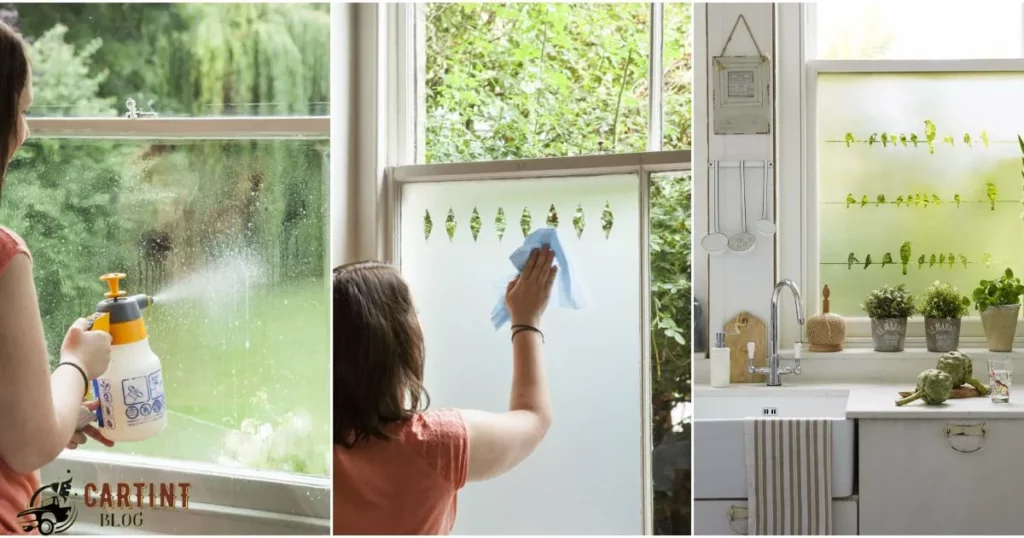
When it comes to DIY window tinting, you save time by opting for a simple and efficient application process. Following clear instructions allows you to complete the tinting swiftly, cutting down on the time spent compared to more complex methods.
This approach streamlines the task, making it accessible and time-effective for anyone seeking to enhance their windows at their own pace.DIY window tinting offers a time-saving solution by providing straightforward steps that reduce the application duration.
This method enables quick completion without compromising quality, letting you enjoy the benefits of tinted windows sooner rather than later. Efficient techniques and user-friendly instructions ensure that your time investment in this project is minimal while achieving satisfying results.
Professional Window Tinting
Professional window tinting offers expert application of films to enhance privacy, reduce glare, and improve energy efficiency. Experts meticulously measure, cut, and install the film to ensure seamless coverage and optimal performance.
Customers can choose from a variety of tint shades and types, benefiting from precise installation techniques that deliver lasting results.Professionally tinted windows not only augment the aesthetic appeal of a space but also contribute to temperature control and UV protection.
Skilled professionals employ specialized tools and techniques, guaranteeing a flawless finish that enhances both the appearance and functionality of windows. Clients can expect durable, high-quality tinting solutions that add value to their properties.
Professional Vs Diy Window Tinting
When comparing professional and DIY window tinting, expertise plays a crucial role. Professionals bring skill and precision, ensuring a flawless finish and optimal functionality. DIY attempts, while cost-effective, may lack finesse and can lead to uneven application, affecting both appearance and effectiveness.
DIY attempts grant flexibility in timing and cost but require meticulous attention to detail and patience for a satisfactory result. The decision between professional and DIY window tinting boils down to the balance between precision and cost-efficiency.
7 Reasons To Avoid Diy Auto Tinting
- Quality Concerns: DIY auto tinting often results in lower-quality application compared to professional services.
- Risk of Bubbling or Peeling: Improper installation increases the likelihood of bubbles, wrinkles, or peeling over time.
- Legal Compliance: DIY tinting might not adhere to legal regulations, leading to potential fines or removal requirements.
- Voiding Warranties: Incorrect installation may void warranties on tinting materials or the vehicle itself.
- Challenges in Removal: Incorrectly applied tint is harder to remove and may damage windows.
- Time-Consuming Process: DIY tinting demands time, patience, and meticulous attention to detail.
- Potential Cost of Replacements: Errors in DIY tinting may result in added expenses for professional reapplication or window replacement.
Avoid These 7 Major Diy Auto Tinting Snafus
When it comes to DIY auto tinting, steering clear of seven major snafus is crucial. Avoiding these mistakes ensures a smoother tinting process and a professional-looking finish. From choosing the right materials to applying the tint correctly, sidestep these errors for a successful tinting job that enhances your vehicle’s aesthetics and functionality.
One of the first mishaps to avoid involves hasty prep work. Rushing through cleaning or neglecting to remove dirt and debris can lead to a messy application. Additionally, overlooking proper measurements and cutting techniques may result in ill-fitting tint films, causing frustration and potential rework.
Scratching, Etching, Breaking Or Damaging Your Car Windows
Scratching, etching, or breaking your car windows during the DIY tinting process can occur if proper care isn’t taken. Mishandling tools or applying excessive force may result in damage, leading to added expenses for repairs or replacements.
Choosing The Wrong Product
Choosing the wrong tinting product is another risk to avoid. Substandard or incompatible films might not adhere well or could discolour over time, affecting visibility and aesthetics. Opting for quality products suitable for your vehicle can prevent such issues and ensure a durable, professional-grade finish.
Raising Your Risk Of A Car Accident
DIY tinting errors can inadvertently raise the risk of a car accident. Poorly applied tints might obstruct visibility, especially at night or in adverse weather conditions, increasing the likelihood of road accidents. Prioritizing careful installation and adherence to regulations can mitigate these risks and maintain safe driving conditions.
The Benefits Of Calling A Professional Auto Window Tinting Service
| Benefits of Professional Auto Window Tinting Service |
| Expertise |
| Professional installers possess expertise and experience in applying tint accurately. |
| Quality Materials |
| They use high-quality tinting materials ensuring durability and optimal results. |
| Customization |
| Professionals offer customization options to meet specific tinting needs and preferences. |
| Warranty Coverage |
| Many professional services provide warranties, ensuring protection against defects or issues. |
| Legal Compliance |
| They are aware of and adhere to local regulations regarding tint darkness and visibility. |
| Time Efficiency |
| Professional installers work efficiently, completing the job in a shorter time frame. |
| Enhanced Aesthetics |
| Their precise application techniques result in a sleek, professional look for your vehicle. |
| Long-term Savings |
| Proper installation reduces the need for rework or repairs, saving money in the long run. |
How Long Does It Take To Tint Windows? A Guide For Homeowners
Tinting windows at home typically takes around 2 to 4 hours per car. For houses, it depends on the number and size of windows, averaging from 4 to 8 hours. Understanding the process and having the right tools can speed it up. Homeowners often find professional services quicker, usually completing the job in a few hours for a whole house.
Factors like skill level, preparation, and the type of film used affect the time needed. For cars, experts can finish the job faster, usually within a couple of hours. With homes, a DIY approach may take longer due to the larger area and intricacies of the windows, but following a step-by-step guide can help streamline the process.
9 Benefits Of Tinting Your Commercial Storefront Windows
Energy Efficiency: Reduces heat gain, saving on cooling costs.
UV Protection: Shields merchandise and occupants from harmful UV rays.
Glare Reduction: Enhances comfort for customers and employees.
Privacy: Prevents outsiders from easily seeing into the store.
Aesthetics: Improves the appearance of the storefront.
Furniture Protection: Guards against fading and damage to interior items.
Security Enhancement: Adds a layer of protection against break-ins.
Regulation Compliance: Meets local regulations on window tinting.
Cost-Effectiveness: Offers long-term savings on energy and maintenance.
Understanding Window Tint Laws In Virginia In 2023
In 2023, Virginia’s window tint laws remain crucial to grasp. These laws dictate the permissible darkness levels for window tinting on vehicles. Knowing these regulations helps car owners ensure compliance, avoiding potential fines or legal issues.
Understanding the specifics of tinting laws in Virginia becomes essential for anyone considering or already having tinted windows on their vehicles.Staying information about Virginia’s window tint laws involves recognizing the legal limits set for front, back, and rear side windows.
Adhering to these specifications not only ensures compliance but also contributes to safer driving conditions on the state’s roads. Familiarizing oneself with these regulations remains a smart move for every driver navigating through Virginia’s evolving tinting laws in 2023.
What Are The Different Types Of Car Window Tint For Vehicles?
Car window tint comes in various types suited for different needs. Dyed film offers basic UV protection and heat reduction, ideal for budget-conscious buyers. Meanwhile, metallic tinting provides stronger heat resistance but may interfere with signals like GPS and radio.
Ceramic window tint, although pricier, offers exceptional heat reduction without signal interference. Finally, carbon film strikes a balance between performance and price, providing good heat rejection and UV protection. Understanding these options helps car owners select the ideal window tint for their vehicle.
How To Choose The Right Tint Shade For Your Vehicle’s Windows
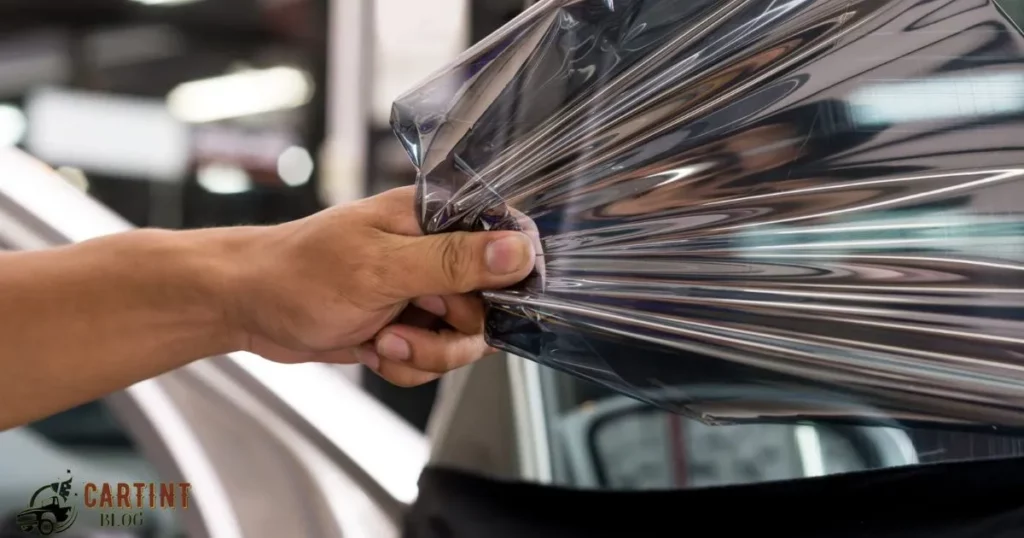
Choosing the perfect tint shade for your car windows involves considering factors like your desired level of privacy, UV protection, and local regulations. Start by evaluating different tint percentages to find one that balances your needs with legal requirements. Lighter tints allow more visibility but offer less privacy and heat reduction compared to darker shades.
Warmer climates might benefit from darker tints for better heat rejection, while lighter tints suit areas with stricter visibility laws. Finding the right tint shade ensures a comfortable driving experience that meets both your practical and aesthetic preferences.
6 Tips For Choosing A Decorative Window Film For Your Home
When selecting a decorative window film for your home, start by considering your preferred style and privacy needs. Opt for patterns or designs that complement your interior decor and maintain the desired level of visibility. Ensure the film’s quality by checking reviews and product specifications.
Measure your windows accurately to avoid purchasing too much or too little film. Seek films that offer easy installation with clear instructions, making the application process hassle-free. By focusing on style, function, and practicality, you’ll find the perfect decorative window film to enhance your home’s ambiance.
6 Common Problems With Diy Window Tinting
| Common Problems with DIY Window Tinting |
| 1. Bubbling |
| Bubbling occurs due to improper application, often caused by trapped air or moisture under the tint. |
| 2. Peeling |
| Poor adhesion or incorrect installation may lead to the film peeling off over time. |
| 3. Uneven Application |
| Inexperienced application might result in uneven tint coverage across the window surface. |
| 4. Dirt and Debris |
| Dust or debris caught during installation can create unsightly imperfections under the tint. |
| 5. Fading or Discoloration |
| Low-quality tint or exposure to sunlight might cause fading or discoloration of the film. |
| 6. Legal Issues |
| Incorrect tint darkness levels may lead to legal problems if they don’t comply with regulations. |
Professionally Installed Car Window Tint
Professionally installed car window tint ensures high-quality application by experts. Skilled technicians precisely fit the tint to your car windows, guaranteeing a seamless finish. This professional touch minimizes the risk of air bubbles or uneven tinting, providing a sleek look and optimal performance.
Professional installation of car window tint offers added durability and warranty assurance. Trained professionals use top-notch materials, enhancing the tint’s longevity and effectiveness. Opting for this service grants peace of mind, knowing that your car’s tint is expertly applied and backed by reliable protection.
Top Benefits Of Ceramic Window Tints For Cars
Ceramic window tints for cars offer top-notch benefits. They provide superior heat rejection, keeping your car cooler during hot days. These tints also block harmful UV rays, safeguarding your skin and the car’s interior from damage. With enhanced clarity and reduced glare, they improve visibility for safer driving.
Ceramic tints don’t interfere with electronic signals, like GPS or phone reception. Their durable nature ensures longevity, maintaining their effectiveness over time. Choosing ceramic window tints for your car brings a blend of comfort, protection, and longevity, making it a smart investment for any driver.
What Type Of Window Tint Is Right For My Car?
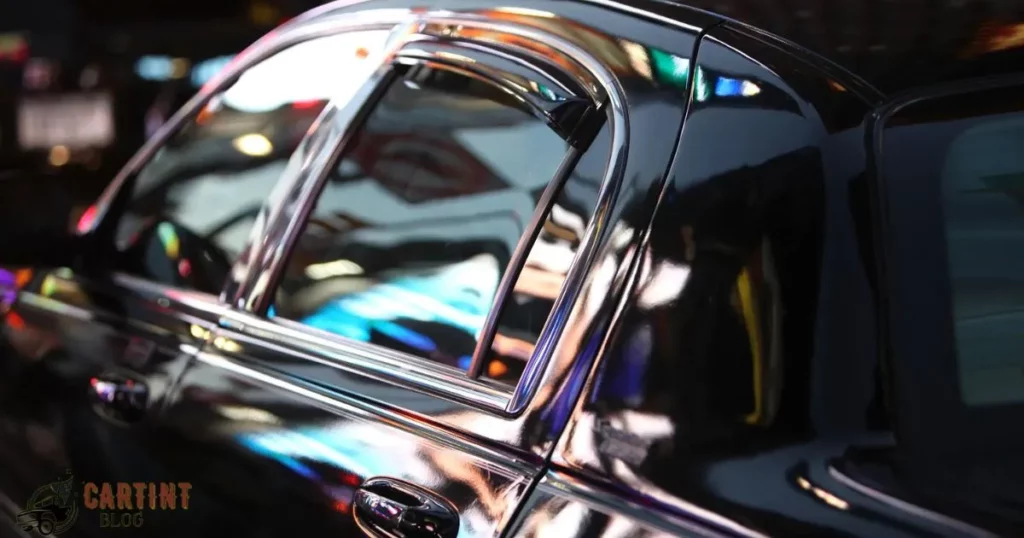
Choosing the right window tint for your car depends on various factors. Consider the level of darkness or light transmission permitted by local laws. Think about the specific features offered by different tint types, such as UV protection, heat reduction, or privacy.
Assessing these aspects helps find the perfect balance between legal compliance and personal preferences.The two main types of car window tint are dyed film and ceramic film. Dyed film offers a budget-friendly option, providing moderate heat and UV protection.
On the other hand, ceramic film, although pricier, offers superior heat reduction and UV blocking without interfering with electronic signals. Understanding these distinctions assists in making an informed decision about the ideal window tint for your vehicle.
How Long Does Car Window Tinting Take?
Car window tinting usually takes about 2 to 4 hours to complete. The duration varies based on the number of windows and the tint’s type. For a sedan, expect around 1.5 to 2 hours, while larger vehicles like SUVs might take 2.5 to 4 hours. Professionals swiftly apply the tint, ensuring precision without wasting much time.
The process involves cleaning the windows thoroughly before applying the tint film. Skilled technicians then measure, cut, and place the film, working efficiently to avoid air bubbles or imperfections. The timeframe primarily depends on the vehicle’s size and the tinting professional’s expertise, often resulting in a relatively swift and seamless job.
Professional Car Window Tint Installation
Professional car window tint installation ensures precision and quality. Experts carefully apply the tint, guaranteeing a seamless finish that reduces glare and protects against UV rays. Their skill and experience ensure a durable and aesthetically pleasing result for your vehicle.
Opting for professional installation means you’ll have access to high-quality materials and expertise. Skilled technicians apply the tint efficiently, enhancing your car’s appearance while providing privacy and comfort. Their meticulous approach ensures a long-lasting tint that meets your specific needs.
Selecting the perfect tint type and level for your car
Selecting the ideal tint involves choosing the type and darkness level that suits your preferences and legal regulations. Considering factors like heat reduction, UV protection, and privacy helps in making the right choice.
Preparing Your Car Windows for Tint Installation
Preparing your car windows for tint installation involves thorough cleaning to ensure a smooth surface. Removal of any residue or debris is crucial for a flawless application of the tint film.
Installing Window Tint on Your Car
The process of installing window tint on your car demands precision and expertise. It includes measuring, cutting, and carefully applying the tint film to achieve a professional and seamless finish that enhances both aesthetics and functionality.
Top 3 Diy Car Window Tinting Dangers
DIY car window tinting can pose significant risks if not approached carefully. improper installation might lead to bubbling or peeling, affecting visibility and aesthetics. Second, using low-quality films may result in a hazy or discoloured appearance over time, reducing clarity and durability.
Violating local tinting laws could lead to fines or having to remove the tint altogether. Considering these dangers helps you navigate DIY tinting with caution for a smoother, safer experience.When diving into DIY car window tinting, three major hazards stand out.
Choosing subpar tinting materials contributes to premature deterioration, leading to a compromised look and functionality. Ignorance of tinting regulations might result in legal repercussions, making it crucial to understand and comply with local laws.
Poor Visibility
When it comes to DIY window tinting, poor visibility is a significant concern. This issue often arises due to improper installation methods, leading to bubbles forming within the window tint. These bubbles not only obstruct the view but also detract from the aesthetic appeal.
Bubbles in the Window Tint
Another aspect related to poor visibility is the presence of bubbles within the window tint. These bubbles typically occur when the tint film isn’t applied smoothly onto the glass surface. They create inconsistencies in the tint, affecting both the appearance and functionality of the window.
Poor Window Tint Application
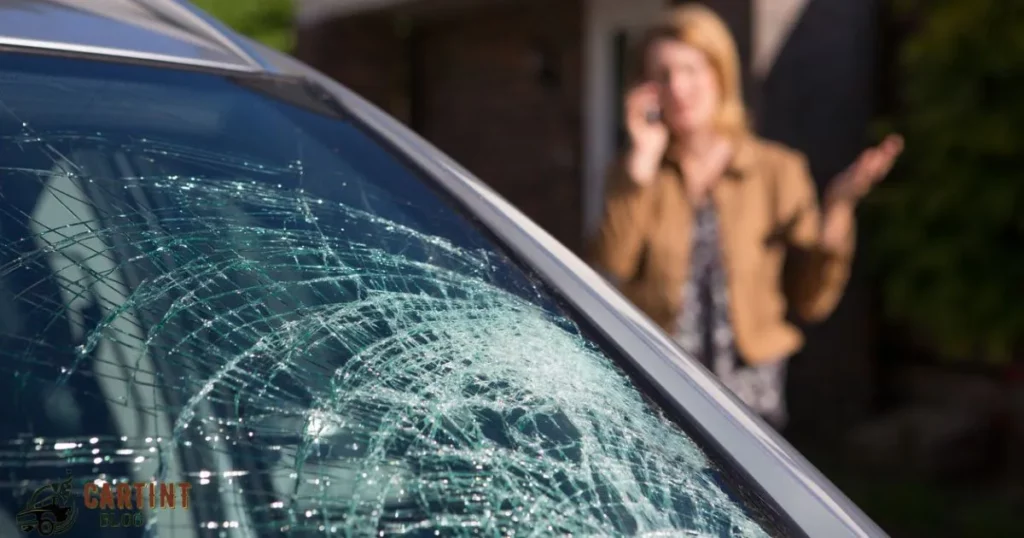
Poor application of window tinting is a primary factor contributing to both poor visibility and the formation of bubbles in the tint. Inadequate technique or rushing through the application process often leads to a subpar outcome.
So Why Not Tint My Car Windows Myself?
Tinting car windows yourself might seem appealing, promising savings. Yet, it demands precise application skills. DIY kits lack professional expertise, risking uneven tint or air bubbles. Hiring a pro ensures quality and a warranty, worth considering.
The DIY route for car window tinting tempts many due to cost-effectiveness. The process requires steady hands and experience. Without professional guidance, achieving seamless tint application can be challenging, potentially leading to unsatisfactory results.
Do You have A Clean Installation Environment For Car Window Tinting?
Ensuring a clean installation environment is crucial for car window tinting. Dust or debris can cause imperfections, so a dust-free space is essential.
Do You have A Clean Installation Environment For Car Window Tinting?
Prioritize a clean, dust-free environment when tinting your car windows. This helps achieve a flawless finish without particles getting trapped under the tint.
Do You Have the Expertise to tint Your Car Windows Effectively?
Having the expertise for effective car window tinting is vital. Without the right skills, achieving a smooth, bubble-free application can be challenging. Consider professional help for quality results.
FAQ’s
Is it worth DIY tinting?
It depends on skills and expectations. Savings are possible, but pro quality might be lacking.
Should I install tint myself?
It’s an option, but precision and patience are key. Consider your comfort level.
Is it hard to tint your own windows?
Yes, it can be. Smooth application needs attention and practice for a bubble-free finish.
Conclusion
In the quest to decide, Is DIY Window Tint Worth It? The answer is nuanced. For the budget-conscious, it offers potential savings, but the trade-off lies in the quality. DIY tinting demands meticulousness and skill; achieving professional-grade results might be challenging.
While it might save money upfront, the outcome depends on individual skills and commitment. Considering professional help ensures a smoother finish, but DIY enthusiasts might find joy and satisfaction in mastering the art of tinting themselves.

